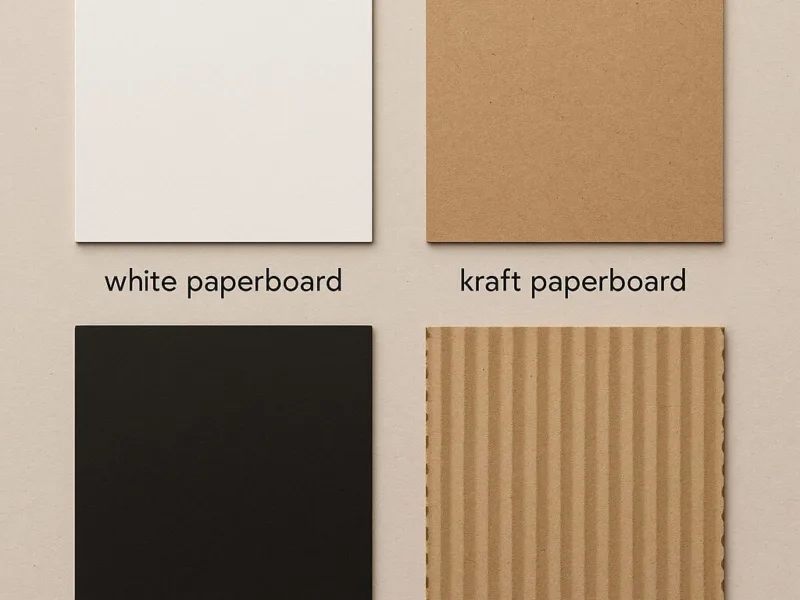
Choosing the wrong paper can damage your product and your brand's image. This costly mistake is easy to make. I will show you how to avoid it.
The best paper depends on your needs. For shipping, corrugated cardboard is unmatched in protection. For luxury retail boxes, SBS paperboard provides superior printing. For an eco-friendly look, Kraft paperboard is strong and durable.
The right paper for your box depends on your product, your brand, and your budget. In this guide, I will break down the most popular paper types to help you decide.
Why is Corrugated Cardboard so popular for shipping boxes?
Worried about products getting damaged during shipping? This leads to returns and unhappy customers. I'll explain why a simple material offers the best protection for your items in transit.
Corrugated cardboard is popular due to its amazing strength and cushioning. Its structure has a wavy, fluted layer between flat sheets. This design absorbs shocks and protects what's inside, making it perfect for shipping.
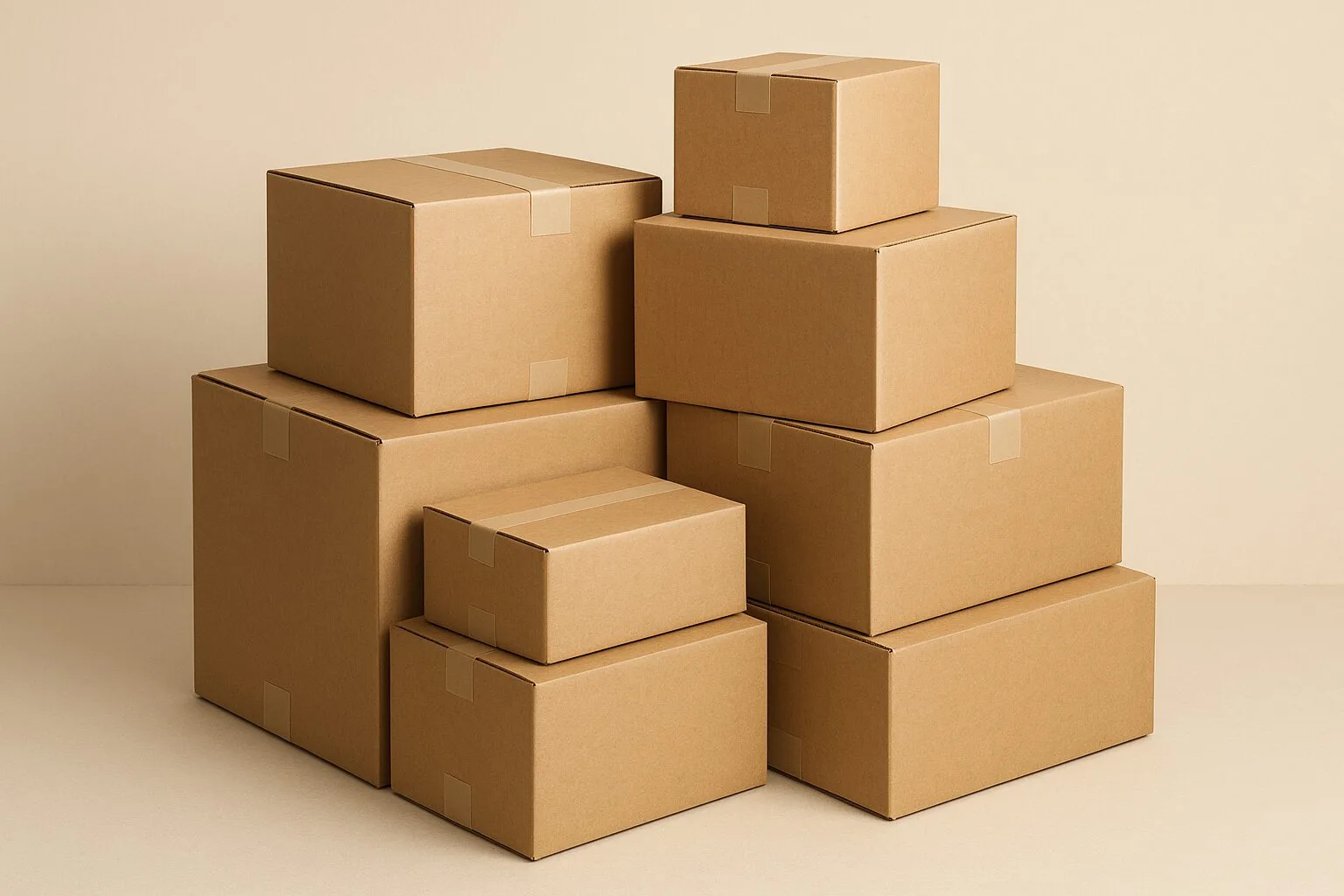
Let's dive deeper into what makes corrugated cardboard the go-to choice for almost all shipping applications. The magic is in its construction. It is not just a thick piece of cardboard. Instead, it is a well-engineered material.
A Look at Corrugated Structure
A standard corrugated sheet consists of two main parts: the linerboard and the medium. The linerboard is the flat paper on the outside surfaces. The medium is the wavy, fluted paper sandwiched in between the linerboards. This flute is what gives the board its strength and cushioning properties. The arches created by the flutes are very strong and can support a lot of weight. They also create a space of air that acts as insulation and a cushion against bumps and vibrations.
Flutes come in different sizes, each with its own benefits.
Flute Types and Their Uses
| Flute Type | Thickness (Approx.) | Flutes Per Foot | Characteristics & Common Uses |
|---|---|---|---|
| C-Flute | 4.0 mm | 41 | Most common for shipping cartons. Good stacking and crushing resistance. |
| B-Flute | 2.5 mm | 49 | Good puncture resistance and a flatter surface for printing. Used for retail mailer boxes. |
| E-Flute | 1.5 mm | 90 | Very thin with a great printing surface. Used for small retail boxes like cosmetic or pizza boxes. |
| F-Flute | 0.8 mm | 128 | Extra thin. Often used for fast-food packaging where rigidity is needed in a small container. |
For even more protection, these layers can be combined. A "single-wall" board has one flute layer. A "double-wall" board has two flute layers and three linerboards, making it much stronger for heavy items. "Triple-wall" is for industrial-level strength.
Printing and Customization
Printing directly onto corrugated cardboard, especially the brown Kraft kind, is usually done with flexographic printing. This is a cost-effective method great for simple logos and text. If you need high-quality, full-color graphics on a shipping box, we use a different method. We print your design on a high-quality paper sheet first. Then, we laminate, or glue, that printed sheet onto the corrugated board. This process is called litho-lamination. It gives you the best of both worlds: the strength of corrugated and the beauty of premium printing.
What makes SBS Paperboard a top choice for retail packaging?
You need your product to stand out on a crowded shelf. Poor printing and dull colors make your brand look unprofessional. What if there was a paper that made your graphics look amazing?
Solid Bleached Sulfate (SBS) paperboard is a top choice because of its smooth, bright white surface. It is the perfect canvas for high-quality printing. Colors appear vibrant and details are sharp, giving your packaging a clean, premium look.
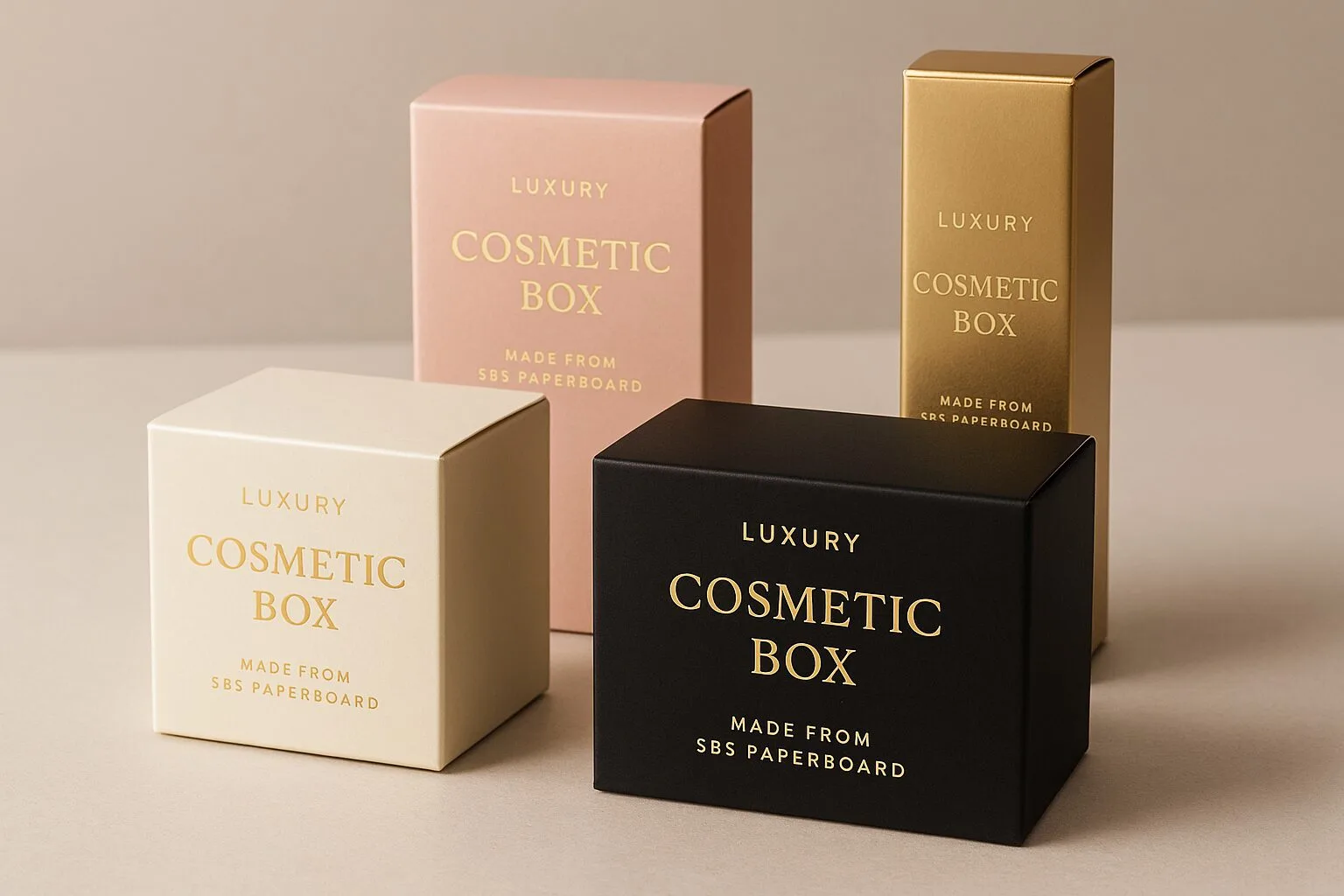
When your box is sitting next to competitors, appearance is everything. SBS paperboard gives brands an immediate advantage in visual appeal. It is made from bleached virgin wood pulp, which creates its signature combination of brightness and purity.
Purity and Printability
The "bleached" part of its name is key. The chemical process removes lignin from the wood pulp, which is the substance that makes paper, like newsprint, turn yellow over time. This results in a stable, bright white sheet that won’t discolor. This pure white base means that the colors you print on top are true and accurate. If your brand has very specific colors, SBS is the most reliable material to reproduce them perfectly.
The surface of SBS is incredibly smooth and uniform. This smoothness allows for very fine detail in printing and excellent results with various finishes.
Benefits of Using SBS
| Feature | Benefit | Best For |
|---|---|---|
| Bright White | True and vibrant color reproduction. Clean, premium aesthetic. | Cosmetics, Pharmaceuticals, high-end electronics. |
| Smooth Surface | Excellent for detailed graphics, fine text, and special finishes. | Luxury goods, confectionery, jewelry. |
| High Stiffness | Holds its shape well, providing good structural integrity for boxes. | Product boxes that need to look sharp and feel solid. |
| Odor & Taste Free | Certified for direct food contact. Does not alter the product's flavor. | Chocolate boxes, cake boxes, other food packaging. |
Finishing and Effects
SBS paperboard works wonderfully with all kinds of finishing options that can elevate your packaging. Because of its smooth surface, techniques like foil stamping, embossing, and debossing create crisp and defined effects. Applying a gloss or matte varnish adds another layer of sophistication and protection. These finishes not just look good; they also create a tactile experience for the customer, making your packaging more memorable. This combination of printability and finishing capability is why you see SBS used so often for brands that want to communicate quality and luxury before the customer even sees the product.
Is Kraft Paperboard a good sustainable packaging option?
Your customers care about the environment. Using plastics or non-recyclable materials can harm your brand's reputation. You need an option that is both eco-friendly and strong enough for your products.
Yes, Kraft paperboard is an excellent sustainable option. It is made from unbleached virgin pulp, making it strong, tear-resistant, and 100% recyclable and biodegradable. Its natural brown look communicates an eco-conscious message.
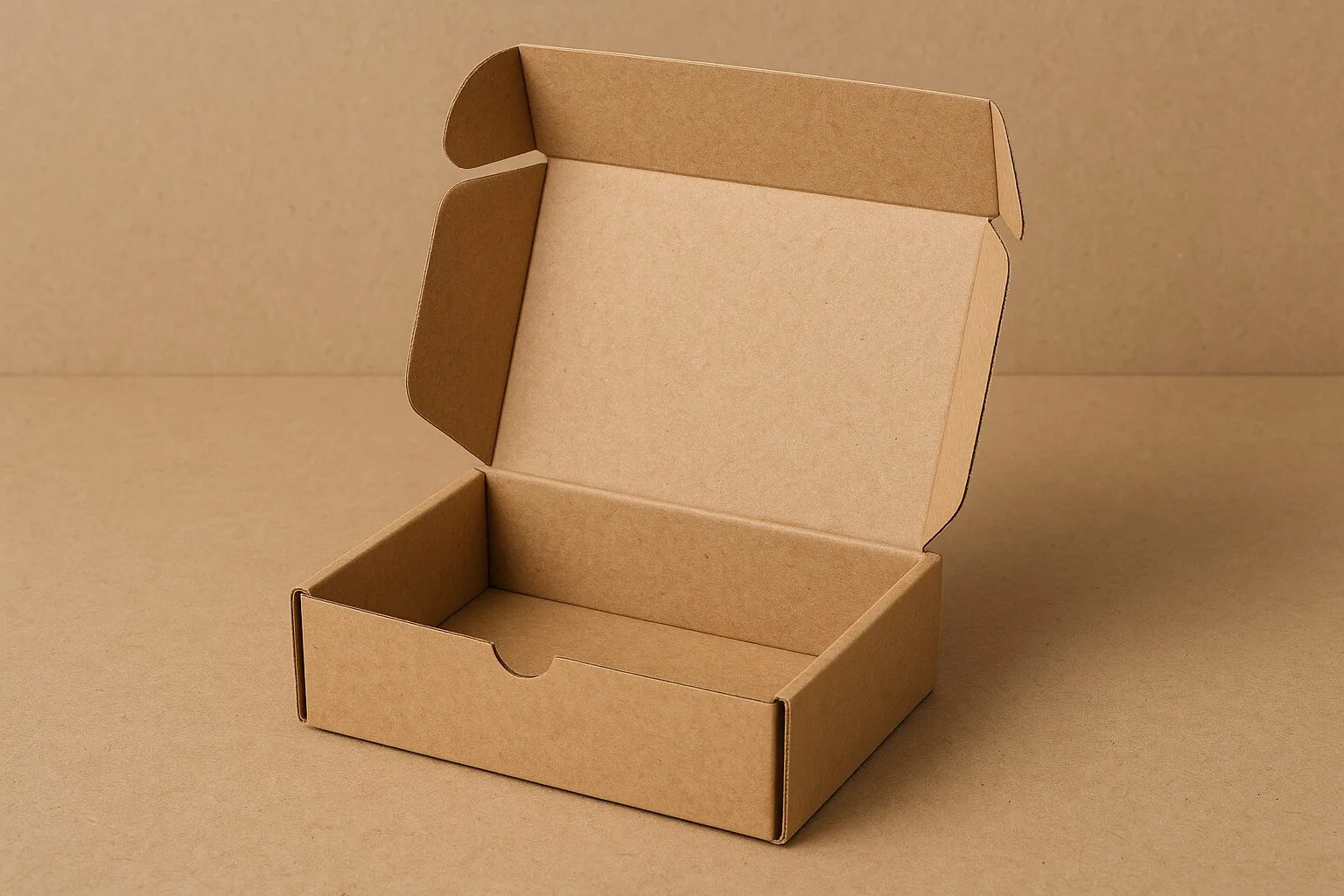
Kraft paper has a distinct natural and rustic appearance that many brands are looking for today. The name "Kraft" comes from the German word for "strength," which perfectly describes its primary attribute. This strength comes from how it's made. The Kraft process results in longer wood pulp fibers, which interlock more effectively, creating a very durable and tear-resistant paperboard.
Strength and Versatility
The inherent strength of Kraft paperboard makes it suitable for a wide range of packaging applications. It can handle heavier products without easily tearing or puncturing. This durability ensures that your product is well-protected during handling and shipping. Kraft paper is an excellent choice for:
- E-commerce mailer boxes
- Boxes for natural or organic products
- Heavy-duty retail boxes for items like hardware or bottles
- Food packaging that requires strength and a natural aesthetic
We can get Kraft paperboard in various thicknesses and weights, so we can tailor the box to the specific weight and protection needs of your product.
The Sustainability Factor
Beyond its strength, Kraft paperboard's biggest selling point is its environmental profile. Since it is often left unbleached, it requires fewer chemicals in its production compared to bleached paperboards like SBS. This makes the manufacturing process cleaner.
It's also a fantastic representative of the circular economy. Kraft paperboard is:
- Recyclable: It can be easily recycled along with other paper and cardboard products.
- Renewable: It is made from wood pulp, a renewable resource, often sourced from sustainably managed forests.
- Biodegradable: If it ends up in a natural environment, it will break down over time without leaving harmful residues.
Printing on Kraft
Printing on the natural brown surface of Kraft paper presents a unique aesthetic. Colors will appear more muted and earthy compared to printing on a white surface. Brands often use this effect to their advantage. Simple designs, often in black or white ink, look very bold and stylish against the brown background. This minimalist look perfectly complements the natural, eco-friendly feel of the material itself. If a brighter graphic is needed, we can first print a layer of white ink on the Kraft paper and then print the colors on top of the white base. This allows for vibrant colors while still keeping the natural Kraft look on other parts of the box.
How do other paper types serve specialty packaging needs?
Maybe your product is very light, or you need an extremely high-end feel. Sometimes, the standard box materials don't quite fit. You need to explore other options for your unique product.
Specialty papers and other paperboards fill specific roles. Chipboard is a low-cost option for inserts. Folding Boxboard is great for food. Coated Kraft offers strength with a printable surface for retail.
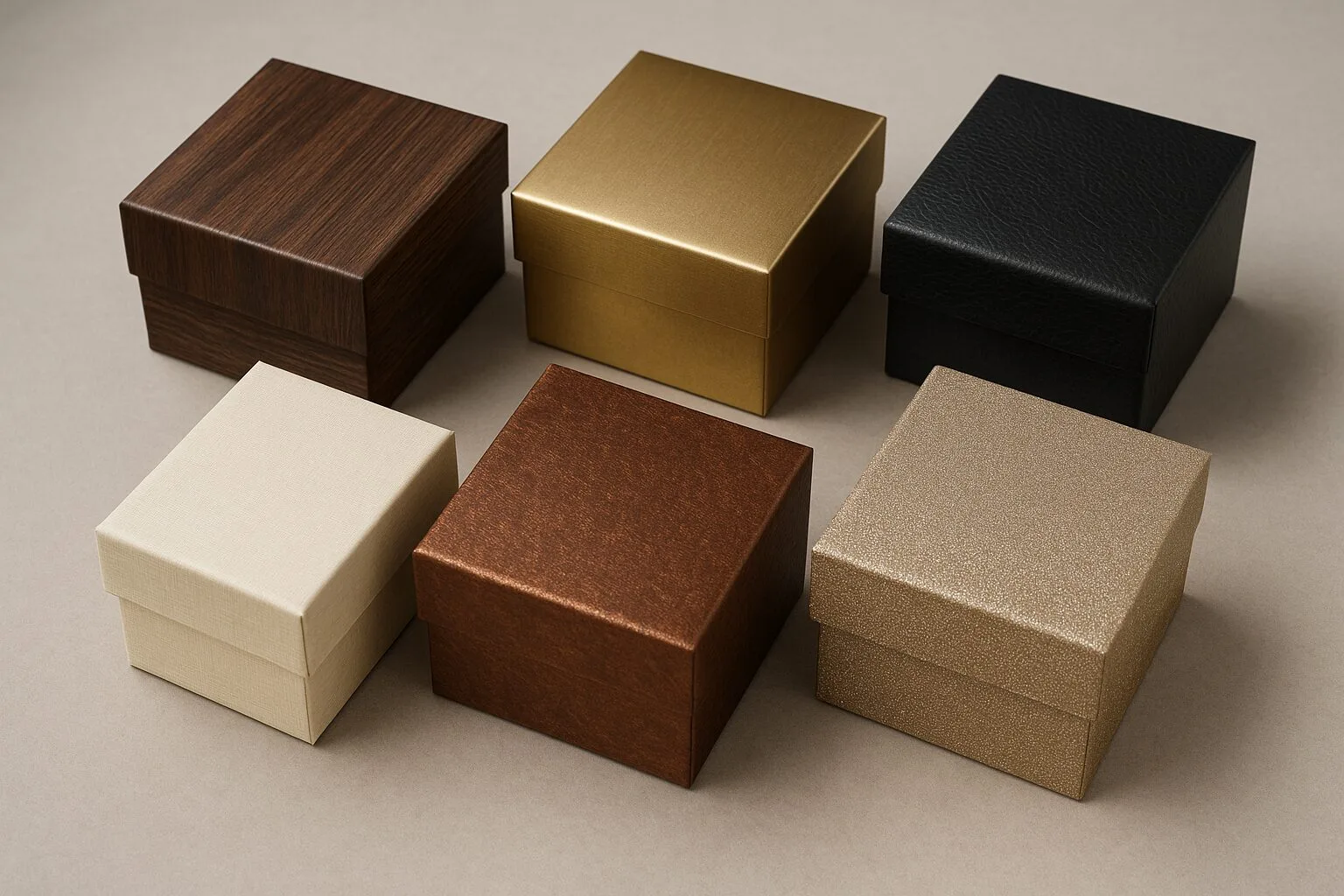
Not every box needs the shipping strength of corrugated or the premium feel of SBS. Different products have different needs, and there is a whole range of paperboards developed to meet them. Understanding these alternatives can help you find a more cost-effective or better-suited solution for your packaging.
Folding Boxboard (FBB)
Folding Boxboard is very popular, especially in Europe. It is a multi-ply material. It usually has a bleached chemical pulp top layer for a good printing surface and a mechanical pulp middle layer. The middle layer gives it high stiffness and bulk, meaning it’s thick but not very heavy. It bends and creases cleanly without cracking, which is essential for making boxes that assemble easily and look sharp. This makes FBB an excellent choice for a variety of retail packaging, particularly for food products, pharmaceuticals, and health and beauty items.
Chipboard (Recycled Paperboard)
Chipboard, also known as Greyboard, is an economical material made from recycled paper fibers that are compressed together. It usually has an unfinished, greyish-brown appearance. While it’s not known for high-quality printing, it is very functional. Chipboard is very rigid and is often used for the core of rigid (set-up) boxes—the kind used for iPhones or luxury board games—which are then wrapped with a high-quality printed paper. It is also commonly used for internal packaging components, like dividers, inserts, or the backer board for notepads. It's a cost-effective way to add structure where visual appeal isn't the primary concern.
Coated Unbleached Kraft (CUK)
Imagine you want the strength and sustainability of Kraft paper, but you need the print quality of a coated board. That’s where CUK comes in. It has a strong, unbleached Kraft back and a bleached, clay-coated top surface. This gives you the best of both worlds: tear resistance and durability for heavier items, plus a smooth, white surface for excellent, high-impact graphics. CUK is very popular for beverage packaging, like can and bottle carriers, as well as for frozen food packaging, where durability and moisture resistance are key.
Specialty and Luxury Papers
For the ultimate premium experience, we move into the world of specialty papers. These are papers designed for looks and feel. They can have pre-embossed textures like linen or leather, a soft-touch matte finish that feels velvety, or a pearlescent or metallic sheen. These papers are often used as a wrap for rigid boxes to create a truly luxurious unboxing experience for products like high-end jewelry, watches, or limited edition products. While they are a more expensive option, they communicate unparalleled quality and attention to detail.
Conclusion
The best paper for your box is the one that protects your product, represents your brand, and fits your budget. From strong corrugated to printable SBS, each material has a specific purpose.






